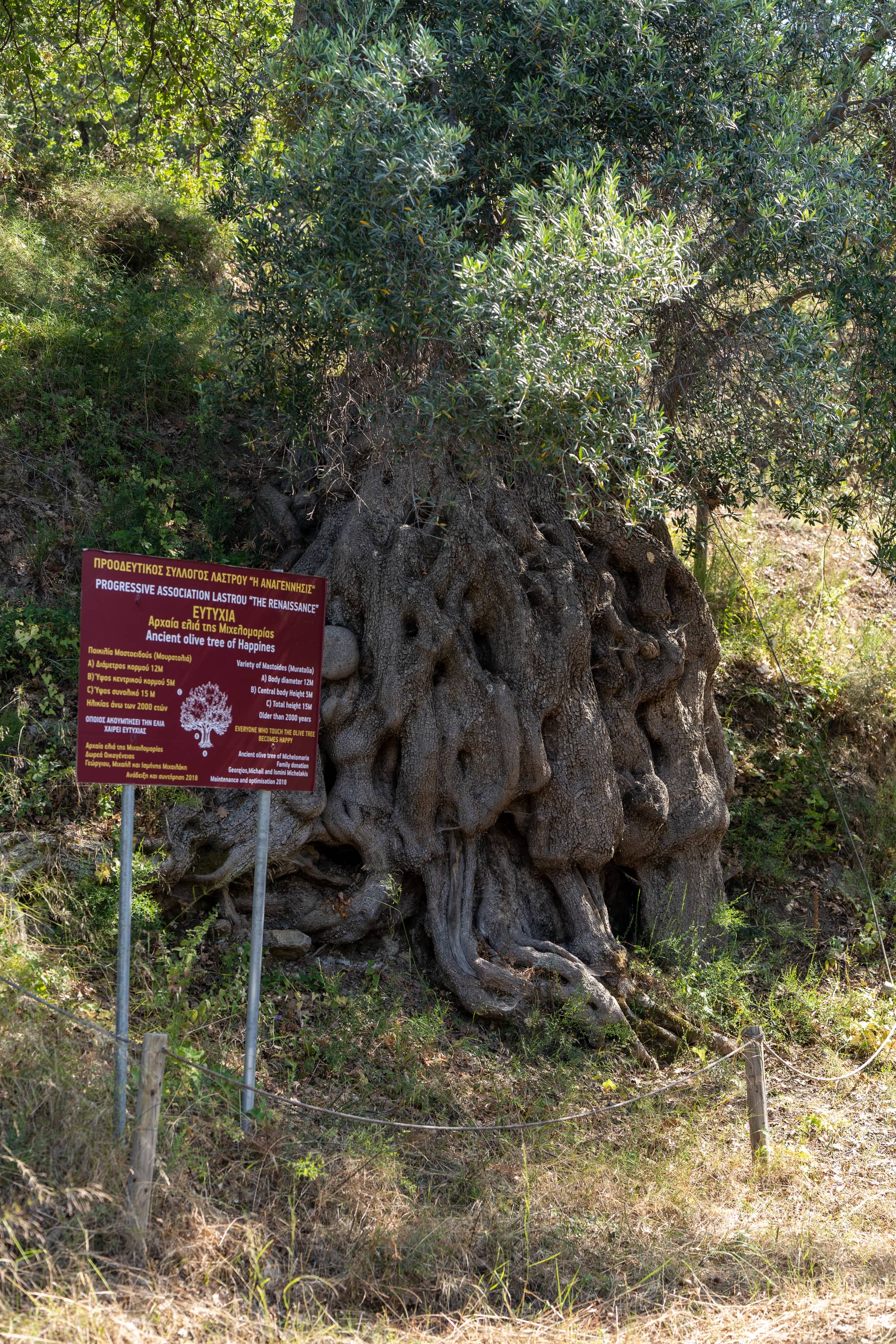
9°C
The geotrail starts from the picturesque village of Lastros, where a Minoan settlement has been discovered. Southwest of the village lies the Late Minoan cemetery, where a bronze sword, pottery, and a clay female figurine were found. Within the village, the Byzantine church of Saint George is preserved, and we can visit the monumental olive trees of “Mathaina” and “Michelomaria.”

East of the village, the hiking trail begins from the marked point on the VOAK (Northern Crete Highway) and follows an uphill path. Continuing, we pass through the impressive fault line of Lastros (or “stefanies” as the locals call it), along with terraced fields and dry stone walls that are still visible today. These were used by landowners to delineate areas for sowing and cultivation.
Next, we proceed towards the summit of Mount Kapsa and the chapel of Saint John. During the ascent, we can enjoy the stunning views of the imposing Sitia mountain ranges, and upon reaching the summit, the panoramic view towards the Merabello bay and the Lassithi mountains will reward us.
Along the route, we observe the characteristic “pezoules” (terraces) and dry stone walls that served as natural dividers and boundaries for the fields and crops of the people in the past.
For more informations, check Sitia’s Geopark official site
The geotrail is a result of the research project Joint Innovative Activities for Outdoor Tourism-JoinOut. The project entitled “Partnership of Innovative Rural Tourism Actions” and distinctive title: “JoInOuT”, is implemented within the framework of the Action “Cooperative Innovation Formations/SCC” – 2nd Call: Businesses” and is financed by the European Regional Development Fund (ERDF) and by National Resources in the context of the Operational Program “Competitiveness, Entrepreneurship and Innovation (EPANEK)” of the NSRF 2014-2020″ (Project code: ΓΓ2CL-0359457).
For the Rural Greece accessibility is fundamental to enhancing an inclusive tourism experience. Following the principles of inclusion and equality, the epaithros Rural Tourism Network and its member businesses are constantly working to enhance the tourism services provided, ensuring that all visitors have the opportunity to experience the authentic beauty of the Greek countryside.
Sustainability in tourism refers to a way of developing tourism that respects and protects the environment while strengthening the local economy and preserving cultural traditions. The aim of sustainable tourism is to provide unique and authentic experiences for visitors without harming the natural and social environment, while ensuring that local communities benefit from tourism activity.
This type of tourism is based on three pillars:
With sustainable tourism, visitors can have authentic experiences, knowing that the impact of tourism on the region is positive and lasting for future generations.
For Rural Greece, localism is one of the most important factors for the development of sustainable tourism, as it promotes a strong link between the tourism product and the local society, economy and culture. Through localism, visitors get the opportunity to explore authentic elements of the destination, such as local products, traditions and culture. This not only boosts the local economy, but also helps to sustain and strengthen local businesses, creating new jobs and supporting the development of local communities.
Furthermore, localism contributes to the sustainability of the tourism sector, as it reduces the use of resources from other regions and encourages the use of local goods and services, reducing the ecological footprint of tourism activities. Thus, integrating localism into tourism practices enhances sustainability awareness, both among visitors and local businesses, creating a more responsible and sustainable tourism destination.